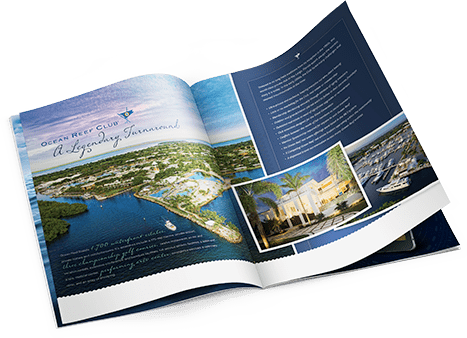A successful marketing strategy includes a mix of traditional media to support a strong digital media campaign. Use this checklist to ensure your print creative is on point.
Traditional media a special way of reaching out to those who may not use the Internet, television, or radio religiously, or helps to keep a client in the consumer’s mind when they’re not engaging with advertisements on other platforms. Print media should be used in a transitional market where there is a seasonal surge of buyers, like in South Florida during the winter months. During that time we have a short window to capture their attention, and we need to utilize every form of marketing available, which is why print media and broadcast television are critical to support a comprehensive digital campaign. A fully successful marketing program will have a healthy mix of both traditional and non-traditional media marketing which complement each other and work together to drive lead generation and sales. Just ask Ken Roscoe, of the creative team at Cotton & Company. “Print is important because you really want to have a complete campaign, one that covers all the bases. You shouldn’t eliminate any tactics or platforms that can help reach your targeted audience” he explains. Additionally, the age of the target consumer should be taken into consideration. Younger people are tied to their devices, while retirees still enjoy relaxing and reading traditional mediums. Print ads should also be used to support special event promotions where you have a limited time to get your message out to an audience you want to invite. Hereare a few tips on how to best use this classic and powerful advertising service to your advantage.
Grab Attention
Roscoe puts a lot of emphasis on the power of a print ad, and why they’re so crucial. “I think a print ad has to really work harder, because you have one shot at getting it right, whereas in digital, you can change your ad all the time.” If you have only one chance at grabbing someone’s attention, do it with all of your effort. Identify your major selling point, use your best photo, and push both consistently. It must be intriguing and compel the viewer to take the next step.
Keep It Simple
While you may not have a lot of space to work with, some of the most effective print ads utilize minimum space for maximum results. It’s not just an option, but a necessity for success with a print advertisement. “…It’s important to try and tell your story as quickly and as simply as possible, in as few words as possible. The copy is important, but if there’s too much of it, people won’t read it.” Do use your best photos and catchphrases that grab attention, but without lengthy descriptions or cluttered photos. What’s your product’s competitive advantage? Focus on what you want the ad to do and have a clear message. And always make sure that the information that you give is related to what you’re selling and who you’re selling to, and don’t push it too hard.
Remember Your Basics
This is a tip that many people tend to pass over, but it’s very important. Just because the form has changed doesn’t mean that the rules haven’t. Make sure that your call to action is clear, concise, and appropriate for the ad, that you provide your contact information, and that you offer any relevant details that your audience will need. This ad is just a piece of the puzzle driving awareness for your brand – be sure to follow your brand guidelines and share your message in a consistent design style. The ad should complement and work with the other marketing you are providing. If a potential homebuyer sees this ad as well as one on Facebook, another in email, as well as a billboard – they should all work together to convey a consistent message with the same goals in mind – lead generation, on-site visits, and sales.
Building a holistic campaign, including a robust print ad campaign, is our specialty at Cotton & Company. Click here to request an audit of your existing digital strategy or to learn more about Cotton & Company’s marketing services call us 772-600-3501.





